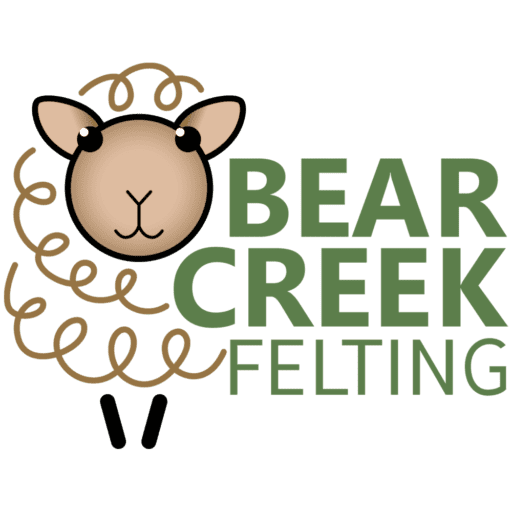
Are you curious about the art of needle felting? If so, you’re not alone! Needle felting has gained immense popularity in recent years, and it’s no wonder why. The ability to create adorable and intricate sculptures using just a felting needle, felting cushion, and some wool is truly fascinating. As a needle felting enthusiast and the owner of Bear Creek Felting, I often receive questions from beginners who are eager to embark on their felting journey. In this blog post, I will address the top five most asked questions about needle felting to help you get started.
1. What do I need to get started needle felting and where do I find it?
Getting started with needle felting is easier than you might think. To begin, you will need a few basic supplies: a felting needle, a felting cushion, and some wool. These items can be purchased through my website, separately or in convenient kits. You don’t need a large quantity of wool initially; a small amount will suffice. Once you have these essentials, you’ll be ready to embark on your felting journey. For more detailed information, feel free to download my free e-book, “Needle Felting Basics.”
2. How do I make a wire armature?
A common question that often arises is whether a wire armature is necessary. My answer may surprise you: “Don’t use a wire armature!” While wire armatures can provide structural support, they are not essential for successful needle felting. By starting with a firmly felted base using the right wool and techniques, you can achieve excellent results without the need for a wire armature. Felted sculptures without wire armatures offer more freedom and versatility during the felting process. Although some minimal wire reinforcement might be required in the legs to ensure stability over time, I have found easier alternatives to creating a full armature. If you’re interested in delving deeper into this topic, Join us in the Bear Creek Needle Felting Academy.
3. What wool do I use and where do I find it?
Selecting the right type of wool is crucial for achieving the desired felting results. With such a wide variety of wool available, each with its unique felting properties, it can be overwhelming to choose. If you have access to local wool suppliers, I recommend starting there and experimenting with different types of wool to discover your personal favorites. It’s always a pleasant surprise to see how various wools felt and behave differently. Personally, I predominantly use Romney wool, occasionally incorporating other types for specific projects. As we raise Romney sheep, this wool is readily available and has been my preferred choice for years. It felts quickly and creates a solid, well-defined finish. To help fellow needle felters with this commonly asked question, I’ve started a blog post series where I explore felting with different sheep breeds. In these posts, I share my experiences and thoughts on the felting characteristics of various wool types. Additionally, I sell my favorite wool, Romney, right here on my website. Remember to stay away from Super Wash wools, as they do not felt effectively.
4. How do you achieve such smooth and firm sculptures?
One of the most impressive aspects of needle felting is the ability to create sculptures that are both smooth and firm. Achieving this level of quality requires a combination of factors. First and foremost, starting with a firm base is crucial. Take your time to felt the base thoroughly, ensuring it is solid and well-structured. Additionally, dedicating ample time to the felting process itself is essential. Patience and persistence pay off when it comes to sculpting smooth and firm creations. Lastly, the type of wool used plays a significant role. In my experience, other wools tend to be slightly spongy and do not felt as solidly as Romney wool. The weight and solidity of my sculptures allow me to add intricate details with ease.
5. Where do you begin when you start a project?
The starting point of a needle felting project can vary depending on the sculpture’s complexity and personal preference. Most of the time, I begin with the body’s midsection and gradually work my way outwards. However, there are instances when I choose to start with the head and add the body later. When tackling a new animal or a particularly challenging sculpture, beginning with the head allows me to ensure its perfection before moving on to the body. The head often dictates the sculpture’s size, as struggling with the head might result in it becoming larger and subsequently influencing the body’s proportions. However, if I feel confident about sculpting the head, I usually start with the body.
I hope that these answers have provided clarity on some of the most frequently asked questions about needle felting. Remember, needle felting is a journey of creativity and exploration. Don’t be afraid to experiment, try different wools, and develop your unique felting style. Enjoy the process, and let your imagination soar as you bring adorable sculptures to life through the art of needle felting!







